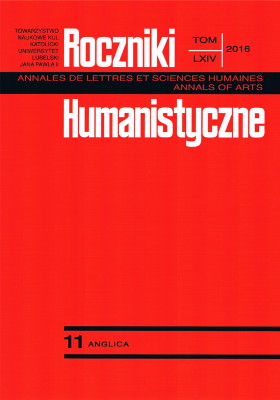The phantom in American Arcadia: Rethinking race in Philip Roth’s The Human Stain
The phantom in American Arcadia: Rethinking race in Philip Roth’s The Human Stain
Author(s): Patrycja AntoszekSubject(s): Language and Literature Studies, Studies of Literature, Other Language Literature
Published by: Towarzystwo Naukowe KUL & Katolicki Uniwersytet Lubelski Jana Pawła II
Keywords: African American; biracial; identity; Jewish-American; passing; race; racial boundaries; whiteness
Summary/Abstract: The article explores the problem of race and racial ambiguity in Philip Roth’s The Human Stain (2000). Referring to Toni Morrison’s Playing in the Dark: Whiteness and the Literary Imagination and her assumptions concerning “the Africanist presence,” the paper discusses how the character’s repressed African-American past returns to haunt not only the protagonist but also the reader. As biracial Coleman Silk succeeds in passing for a Jew, his body becomes a signifier whose signified turns out to be problematic. While Roth’s narrative argues that the ideal of a self-made man that the protagonist represents is always already haunted by the ghost of racial uncertainty, it also demonstrates that the issue of race functions in contemporary writing primarily as a metaphor, or “a way of referring to and disguising forces, events, classes, and expressions of social decay and economic division far more threatening to the body politic than biological ‘race’ ever was.” Finally, the paper explores the way in which Roth’s novel addresses the long familiar fear that racial boundaries do not exist and the coherent white American self is an illusion.
Journal: Roczniki Humanistyczne
- Issue Year: 64/2016
- Issue No: 11
- Page Range: 149-158
- Page Count: 10
- Language: English

